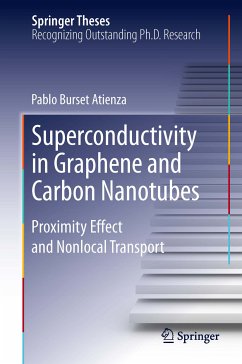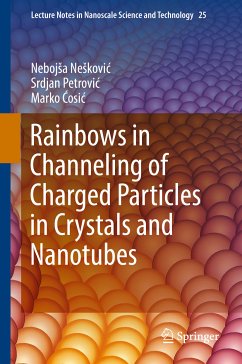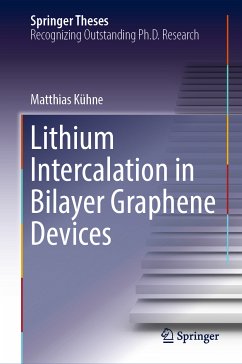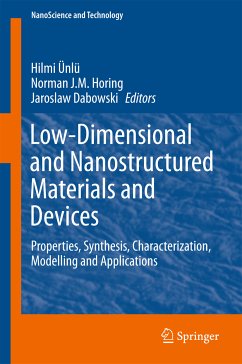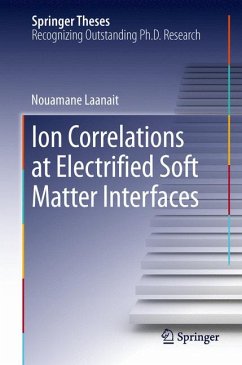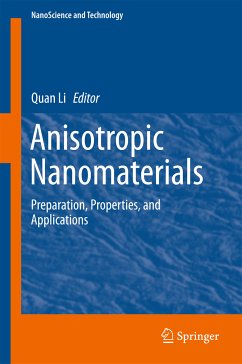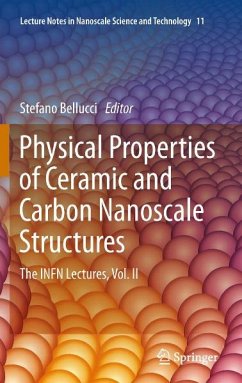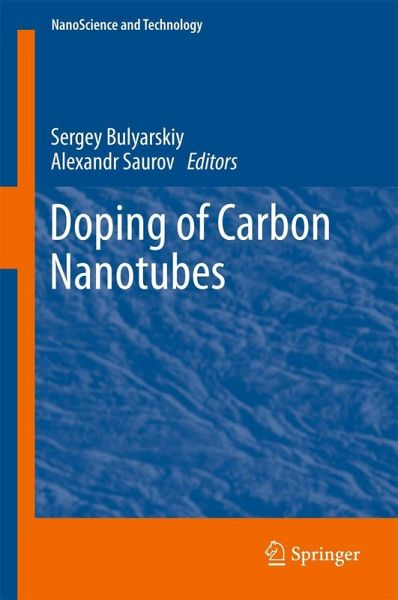
Doping of Carbon Nanotubes (eBook, PDF)
Versandkostenfrei!
Sofort per Download lieferbar
72,95 €
inkl. MwSt.
Weitere Ausgaben:

PAYBACK Punkte
36 °P sammeln!
This book addresses the control of electronic properties of carbon nanotubes. It presents thermodynamic calculations of the formation of impurities and defects in the interaction of nanotubes with hydrogen, oxygen, nitrogen and boron, based on theoretical models of the formation of defects in carbon nanotubes. It is shown that doping and adsorption lead to changes in the electronic structure of the tubes as well as to the appearance of impurity states in the HOMO-LUMO gap. The book presents examples of specific calculations for doping of carbon nanotubes with oxygen, hydrogen, nitrogen and bor...
This book addresses the control of electronic properties of carbon nanotubes. It presents thermodynamic calculations of the formation of impurities and defects in the interaction of nanotubes with hydrogen, oxygen, nitrogen and boron, based on theoretical models of the formation of defects in carbon nanotubes. It is shown that doping and adsorption lead to changes in the electronic structure of the tubes as well as to the appearance of impurity states in the HOMO-LUMO gap. The book presents examples of specific calculations for doping of carbon nanotubes with oxygen, hydrogen, nitrogen and boron, together with numerous experimental results and a comparison with the author's thermodynamic calculations. Possible directions of the technological processes of optimization are pointed out, as well as the perspectives of p-n-transition creation with the help of carbon nanotube arrays.
The results presented were derived from the physics of the processes and a theoretical model of the technological processes. Though a wealth of empirical information on doping nanotubes has been accumulated in the scientific literature, what is lacking is a theoretical model for their analysis. As such, the book develops a thermodynamic model of the self-organization of structural elements in multicomponent systems - including carbon nanotubes, clusters and precipitates in condensed matter - and subsequently adapts it to the doping of carbon nanotubes. This approach allows readers to gain a far deeper understanding of the processes of doping carbon nanotubes.
The results presented were derived from the physics of the processes and a theoretical model of the technological processes. Though a wealth of empirical information on doping nanotubes has been accumulated in the scientific literature, what is lacking is a theoretical model for their analysis. As such, the book develops a thermodynamic model of the self-organization of structural elements in multicomponent systems - including carbon nanotubes, clusters and precipitates in condensed matter - and subsequently adapts it to the doping of carbon nanotubes. This approach allows readers to gain a far deeper understanding of the processes of doping carbon nanotubes.
Dieser Download kann aus rechtlichen Gründen nur mit Rechnungsadresse in A, B, BG, CY, CZ, D, DK, EW, E, FIN, F, GR, HR, H, IRL, I, LT, L, LR, M, NL, PL, P, R, S, SLO, SK ausgeliefert werden.



